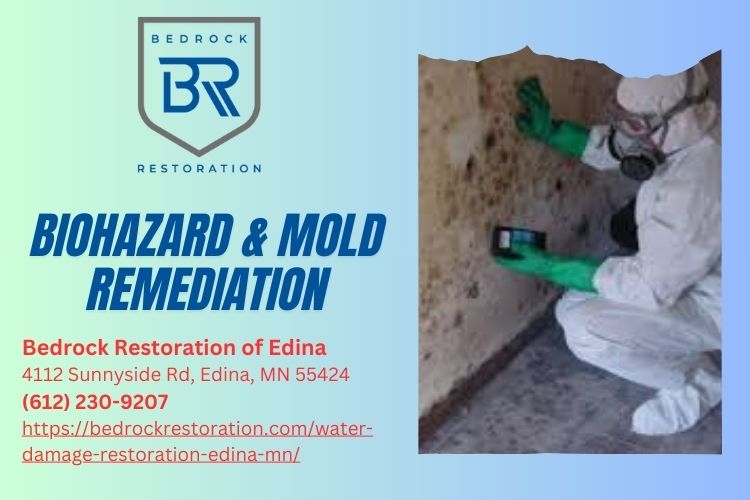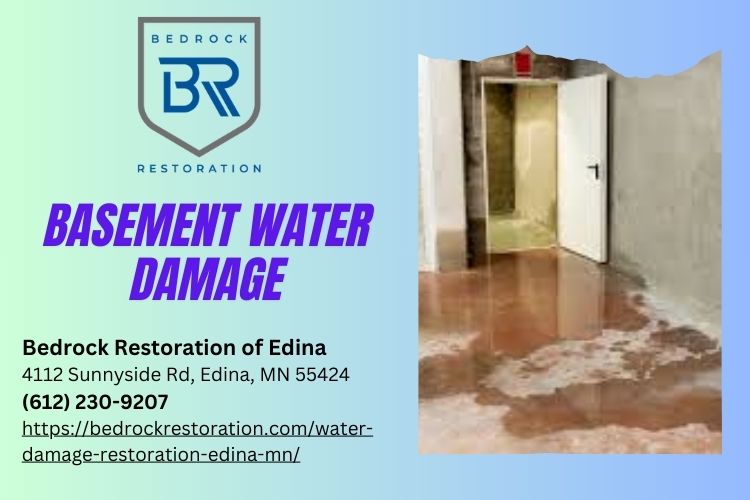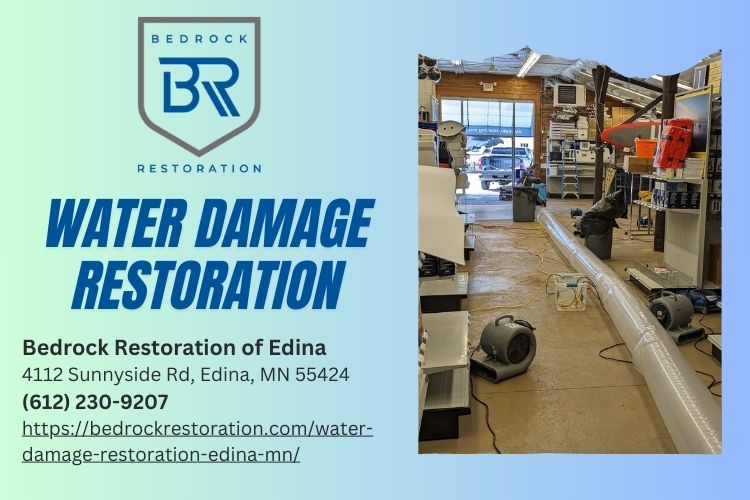Introduction
Basements often serve as valuable spaces in our homes, whether for storage, laundry, or even living areas. However, they are also prone to water damage due to their position underground and their proximity to the surrounding soil. Understanding the common causes of basement water damage and how to prevent them is crucial for homeowners who want to maintain a safe and dry environment. In this comprehensive guide, we will explore various factors that contribute to water damage in basements and provide effective strategies for prevention.
Common Causes of Basement Water Damage
1. Poor Drainage Systems
Improper drainage is one of the leading culprits behind basement water damage. When rainwater accumulates around your home's foundation without proper drainage systems in place, it can seep into your basement.
How It Happens
The ground around your home should slope away from the foundation to facilitate drainage. If your yard is flat or slopes toward the house, water will pool around the foundation.
Prevention Strategies
- Install a French drain system. Ensure downspouts direct water at least five feet away from the foundation. Regularly check gutters for blockages.
2. Foundation Cracks
Foundation cracks can develop over time due to natural settling or temperature changes. These cracks can allow moisture to enter your basement.

Identification
Look for visible cracks on walls or floors, especially after heavy rains.
Prevention Strategies
- Seal small cracks with hydraulic cement. Use waterproof coatings on exterior walls.
3. High Groundwater Levels
In areas with high groundwater levels, especially during rainy basement water damage seasons, basements are at risk of flooding.
Impact on Basements
Excess water pressure on foundation walls can lead to leaks.
Prevention Strategies
- Consider installing a sump pump. Monitor local weather patterns and groundwater levels.
4. Plumbing Leaks
Old pipes or poorly sealed joints can lead to plumbing leaks that may go unnoticed until significant damage occurs.

Signs of Leakage
Check for damp spots on walls or floors and listen for dripping sounds.
Prevention Strategies
- Regularly inspect plumbing systems. Replace old pipes with newer materials like PVC.
5. Condensation Issues
Humidity in your basement can lead to condensation forming on walls and floors, which contributes to mold growth and structural damage.
" width="560" height="315" frameborder="0" allowfullscreen>
Understanding Humidity
High humidity levels often occur in warmer months or in homes without adequate ventilation.
Prevention Strategies
- Use dehumidifiers. Install ventilation fans and air circulation systems.
Identifying Water Damage: Signs to Watch For
6. Musty Odors
If you notice an unpleasant smell emanating from your basement, it might indicate mold growth due to moisture buildup.
" width="560" height="315" frameborder="0" allowfullscreen>
7. Discoloration on Walls
Water stains or discoloration on walls can signal ongoing moisture issues that require immediate attention.
8. Peeling Paint or Wallpaper
When paint blisters or wallpaper peels away from surfaces, it could suggest underlying moisture problems that need resolving.
How Water Damage Can Affect Your Home
9. Structural Integrity Risks
Excess moisture can compromise the structural integrity of your home by weakening beams and supports over time.
10. Mold Growth Risks
Mold thrives in damp environments; exposure can cause health issues ranging from allergies to respiratory problems.
Professional Help: When Is It Necessary?
Sometimes DIY solutions may not suffice when dealing with extensive water damage. Knowing when to call professionals is key:
11. Extensive Flooding
If you experience significant flooding that overwhelms your ability to manage it yourself, seek professional help immediately.
12. Persistent Mold Issues
For recurring mold problems despite preventive measures taken, it's wise to consult a certified remediation service such as a reputable water damage restoration company near you.
Water Damage Restoration Services: What They Offer?
Professional services offer specialized tools and expertise needed for effective cleanup:
13. Thorough Assessment
They evaluate the extent of damage before proceeding with any restoration work.
14. Advanced Equipment Usage
Specialized equipment such as industrial dehumidifiers helps accelerate the drying process effectively compared to standard household options.
Finding Reliable Water Damage Restoration Companies Near Me
Choosing a trustworthy service provider is critical:
15. Look for Reviews
Online reviews can guide you towards reliable services based on past customer experiences.
16. Check Credentials
Ensure that companies have proper licenses and certifications demonstrating their qualifications in handling water damage restoration tasks safely and effectively.
Cost Factors in Water Damage Restoration Services
Understanding costs involved helps you budget better:
| Service Type | Average Cost Range | |------------------------|---------------------| | Initial Assessment | $200 - $500 | | Water Extraction | $800 - $3,000 | | Mold Remediation | $500 - $6,000 |
DIY vs Professional Solutions: Weighing Your Options
Homeowners often face decisions between tackling repairs themselves or hiring professionals:
17. Pros of DIY Solutions
Cost savings if you have basic skills; however…
18. Cons of DIY Solutions
Risk of overlooking hidden damages requiring expert insight.
Steps for Effective Water Damage Cleanup at Home
If you're facing manageable leaks or minor flooding situations yourself:
Turn off power supply immediately. Remove items from affected areas promptly. Use mops/buckets for excess water removal. Air out space thoroughly using fans/dehumidifiers.Preventive Measures: Proactive Steps You Can Take Now!
Being proactive minimizes risks associated with future incidents:
19. Landscaping Considerations
Design landscape features directing rainwater away from foundations while ensuring proper grading.
20. Choosing Correct Materials
Use waterproof materials when renovating basements; consider using vapor barriers during construction projects.
21. Regular Maintenance Checks
Schedule biannual inspections focusing on potential leak sources (i.e., roof/gutters/plumbing).
22. Education & Awareness
Stay informed about seasonal weather patterns affecting local groundwater levels so you’re prepared accordingly.
FAQs
Q1: What are common signs indicating potential basement water damage?
A1: Look out for musty odors, discoloration on walls, peeling paint/wallpaper among others which may indicate ongoing moisture issues needing immediate attention!

Q2: How do I choose a reputable water damage restoration company?
A2: Check online reviews/ratings while also verifying credentials/licenses before making decisions regarding service providers recommended by friends/family members!
Q3: Are there preventative measures I should take?
A3: Yes! Regular maintenance checks combined with landscaping considerations plus selecting appropriate materials during renovations play essential roles!
Q4: What should I do if my basement floods?
A4: Immediately turn off power sources & remove valuables before attempting basic clean-up efforts like mopping/extracting excess standing waters!
Q5: How often should I inspect my plumbing system?
A5: It’s advisable that homeowners conduct inspections at least twice per year focusing specifically around potential leak sources such as old pipes/joints etc…
Conclusion
In conclusion, understanding the common causes of basement water damage and how to prevent them is vital in maintaining a healthy living environment within your home—while keeping structural integrity intact! By taking proactive measures such as regular inspections alongside utilizing professional services when necessary—homeowners can effectively manage risks associated with unwanted moisture intrusions into their basements! Remember — staying informed goes hand-in-hand with protecting what matters most!
Contact Us
Bedrock Restoration of Edina
Address: 4112 Sunnyside Rd, Edina, MN 55424, United States
Phone: (612) 230-9207